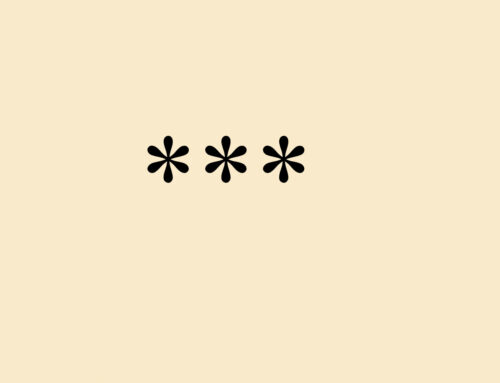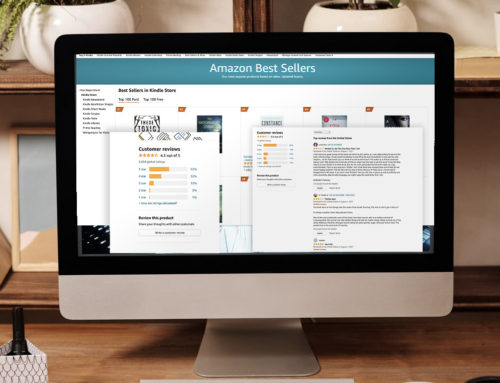 On October 12, 2010, I posted Ebook Opportunities to discuss my take on the major established and upcoming ebook sales venues. This is an update. It will repeat last year’s data on a venue-by-venue basis, then update each in boldface.
On October 12, 2010, I posted Ebook Opportunities to discuss my take on the major established and upcoming ebook sales venues. This is an update. It will repeat last year’s data on a venue-by-venue basis, then update each in boldface.
I’ve wanted for some time to report my experiences with pretty much every serious player in the ebook sales arena, but I’ve held off to see if B&N’s PubIt program ever went live. It has, I’ve uploaded 42 titles, and I’m ready to go.
KINDLE: This is the daddy of the ebook opportunities. I don’t think I need to say much, but I want to acknowledge that it remains the, by far, top earner for everyone I know who sells ebooks. Amazon reacts to market pressures and publisher input, and they have, so far, the largest installed customer base (which could be everyone with a computer device of some kind). The new higher royalty rates and growing customer base have doubled my already decent earnings in a two-month span. I have been contacted about reports formatting following some nasty comments; they listened, asked questions, and took advice. Amazon DTP screws up, but I don’t believe they cheat, and I give them high marks for making things right. They are making it easier and easier to get new titles up and running, and their support of authors is peerless.
October was when Kindle took off for me. My sales that month increased a whopping 1,000 percent–ten times. In January, I read that Amazon had sold something like 10,000,000 Kindles in 2010, which tracks with my sales experience. I have added titles and have more or less kept up with my giant October 2010 increase, but it remains to be seen if 2011 sales will bring about another big jump. Nothing to indicate that so far.
SONY: The folks running the Sony Reader program are definitely not book people. They are definitely computer geeks. Despite the many good examples Amazon provides in the way of easy uploads and author/publisher services, Sony is as remote from its authors and publishers as it’s acceptable to be. There’s nothing intuitive going on at any level of the book registration and upload process. It virtually requires personal relationships with several people to successfully get a book from your hard drive to on-sale. Sales are reported quarterly. The results of Q2, the only one I have, shows income at 18 percent of Kindle sales for the same period (when 35% was the only royalty rate). My overall rating: meh
Sony is staggering. My Q3 2011 sales are only 30 percent of my Q3 2010 sales, which is consonant with all the quarters in between. I’ve stopped adding new titles.
KOBO: A complete waste of time and effort. They want epubs in such a way as to use the first chapter as a sample. My epubs don’t give them the leeway and I won’t do the extra work. They charged me a total of $142 to put my epubs right. I’ve earned $25 in four months. I’m glad I didn’t add more books for more money. I have no intention of getting in deeper. Nice folks, but that’s no incentive to get in deeper.
I’m in the process of giving Kobo a second chance. My sales on only four of seven titles have doubled since last year, and they’re still disappointing, but the titles are not my best earners and they’re actually around half, title for title, what they are on Kindle. Also, a recent post here and confirmation from my Kobo contacts, seem to say they’re getting smarter through the device of being bought out by what appears to be a more aggressive company. I’m in the process of adding eight new titles to the Kobo line-up–on my way to fifty if things take me in the right direction. It’s still a pain in the ass to upload to Kobo, but they promise a Kindle-class portal in “early 2012.” Stay tuned. I still think Kobo’s emphasis on smartphones is a winning strategy, if it isn’t too late to gain market share.
APPLE: You need an aggregator to get your books into Apple’s secret iPad cabal. I’m an early Lightning Source customer, and they carried my water. I filled out a complicated Excel spreadsheet over a weekend. All but three epub files passed the test and they eventually fixed the others without telling me what was wrong. They seem to be alert and interested in the business, but I get the impression that there are no book people on the Apple side, that all they’re doing is monetizing their technology via stinky book people they hold at beyond arm’s length. Net earnings are running at around 15 percent of Amazon sales on a month-by-month basis. My guess is that most of the almost 9 bizillion iPad users don’t read books.
Apple is underperforming. Monthly sales remain at around 15 percent of Kindle sales, month in and month out. The lag seems to be this: To the extent iPad’s huge and growing customer base reads books at all, it appears that the majority is buying ebooks on the bigger, friendlier Kindle site and using the Kindle app on the iPad. This is mind-bending, but it makes sense given the reportedly immense size of the iPad installed base. One thing that I believe is hurting Apple is its insistence that sellers reach the Apple store via aggregators. I need confirmation, but if this is right, Apple’s arms-length relationship with stinky book people hurts iPad ebook sales and helps the Kindle store.
B&N PubIt: I’m publisher 131! They’re learning to shave on my face without exhibiting the least desire to contact me. I uploaded all 42 titles since last Tuesday and it was pretty effortless on an intuitive interaction cribbed largely from Amazon DTP. You DO NOT need Smashwords if you can read, write, point, and click. My first sale was made on Wednesday, the same day my first (test) book went live. Sales are slow, but I’m guessing this is a function of a low installed base of readers–Nooks and others. One technical glitch marred the upload process. I didn’t get an answer to a query to an email address that took me two days to find; I didn’t even get an autoresponse. I suppose B&N online is overseen by book people–but I can only assume there are any actual people involved. On the other hand, several glitches during the account registration process generated emails with a phone number that was answered quickly by bright, eager-to-please folks who even called me back and, heaven help us, showed some initiative. It’s early days; I’m willing to chalk the minor disappointments up provisionally to growing pains. (B&N Online, I believe, is the only option B&N has to save itself.)
PubIt sales are flat and locked in at 8 to 12 percent of Kindle sales, month in and month out. I can’t begin to guess what the hell happened, given the number of Nooks that B&N says it’s selling. It’s market share in ebook sales should be going up relative to Kindle sales.
SCRIBD: I uploaded a bunch of articles to Scribd two years ago and sold one once before I took everything down in late 2009. I decided to upload my bestsellers to see what happened. I sold ZERO on Scribd, but I’ve had thousands of reads and an uptick in Amazon sales that coincide with a slow rollout of yet more titles (33 of 42 so far). The upload process is fine once you get used to it. If I never sell anything–I no longer expect to–I’ll chalk the effort up to promotion. On the other hand, Scribd claims it’s poised to get sales going in a big way once it converts its library to HTML5.
Ditto for SCRIBD. This isn’t a place to sell ebooks, it’s a place to show samples. I’ve been there way more than a year and have not reached total sales high enough to qualify for payment. My accumulated reads on SCRIBD for more than 50 titles is way over 40,000, but I can’t point to a single read I can connect with a sale. I’m going to guess there are people willing to read random scraps of books without any desire to buy anything. It’s puzzling.
GOOGLE PARTNER: This is the program that started off as the biggest (attempted?) theft of the printed word in history. Now it seems safe. I had a very hard time coming around to anything Google, but I decided I’m either in the business or not in the business. All the Partner program does is show a portion (you decide) of your book or article and provide links if it’s on sale elsewhere. The idea is to get readers of the samples to buy product. Uploading is pretty easy (you need Adobe pdf contents and jpg covers), and they are extremely responsive (albeit in maddening corporatespeak) to queries and problem reports.
Everything I said about SCRIBED goes for the Google Partner program without any stats on reads. It’s just passive advertising. BUT you can’t get to the Google bookselling part without posting the book to the Google Partner program.
GOOGLE EDITIONS: This prospective, serially delayed program might someday be the jewel in the crown. If you’re enrolled in Google Partners, you can upload an epub for the Editions program. Intake is easy and intuitive once you’ve struggled with corporatespeak FAQs that can be misleading if you think that’s all there is to it. I expect Google Editions to take off, once it finally begins, because it’s a Google product that will be made viable for any electronic gadget humankind can possible imagine. I even expect my c.1975 electric knife to grow a screen once Google thrusts its way into yet another aspect of routine existence.
Google Editions is now live as Google eBooks. So far, it’s pretty much a bust. In payouts going back to mid-year, sales are in the 5 to 10 books per month range, and it remains a GIANT pain in the ass to get new books uploaded and posted, which never occurs without a lot of pleading and whining at hard-to-reach staff. Google does pay at the end of the month for any books sold, but that doesn’t mean much in the grand scheme of things. What are these people thinking. They’re fricking Google!
Last point: I did it all myself–formatting, file conversion, uploads, promo, the whole kaboodle. 42 titles! I share iPad earnings with Lightning Source because there’s no other way. You too can do it yourself; you got this far on your own.
I want to add my experience with Print on Demand books. I’ve been in PODs since 1999, made lots of money, and have added titles, up to 30 total, since Kindle became a factor. Even adding titles has not stemmed the overall diminution of POD sales. I average half the total monthly income I was getting in mid 2009. I’m happy I don’t have to sell down inventories in a world dependent on chain bookstores. What chain bookstores?
I’m still doing all my own ebook formatting, and I’ve begun lining up plenty of other people’s books–reprints and originals–to keep me as busy as I want to be. I’m starting to see sales trends and cycles as titles move up and down my bestseller list. I feel that if I’m going to run a publishing company, I need to publish a steady stream of new titles to replace waning titles. I also believe that we’re really being kept afloat by all the new people crowding in to buy ebooks, but that that will not be sustainable. My own focus has fallen on the arrival of HTML5 and other schemes to publish effective photo ebooks. I have no idea how this is going to mesh with tiny smartphone screens (which are what I feel will be the main engine of growth). I perceive that people do not want to read books on desktop, laptop, or notebook computers, which seem to me to be the natural habitat of graphics-heavy ebooks. We shall see.
Get an Editorial Review | Get Amazon Sales & Reviews | Get Edited | Publish Your Book | Enter the SPR Book Awards | Other Marketing Services






















Leave A Comment